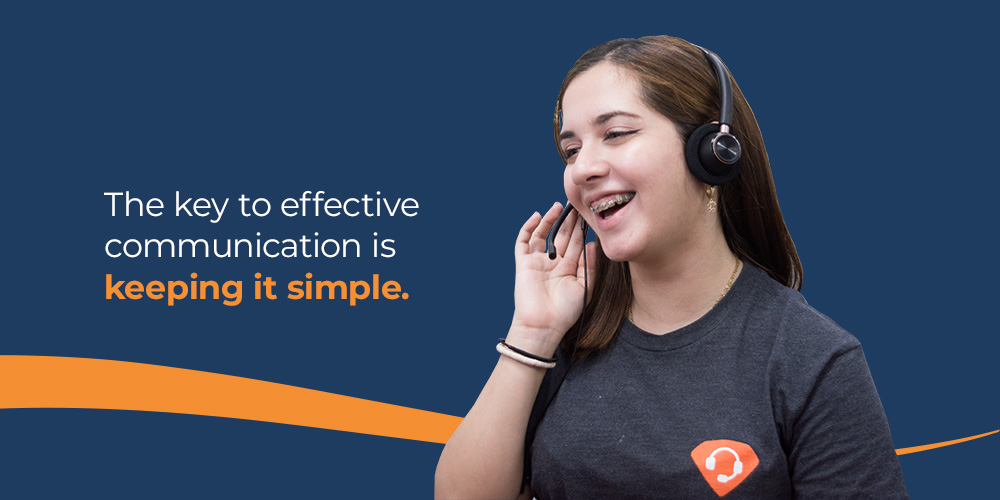Taking phone calls is a core responsibility for many companies, but these calls are different from the catch-ups you have with friends and family. They require professionalism. If you’re new to the world of professional phone calls, learning how to sound confident on the phone and interact with clients or customers is a powerful skill.
While modern businesses have many ways to communicate with customers, the phone is still the primary form of communication for many. Often, a phone call is where a customer or client makes their first impression about your company, so professional phone etiquette is a must.
When a caller can feel your professionalism over the phone, they’re more likely to trust you and learn more about your business. A lack of professionalism can make you seem incompetent or untrustworthy, making it more challenging for you to build your client base.
In addition to conveying that you are trustworthy, professionalism shows you respect your caller. When a lead feels this respect, they’re more likely to ask questions and develop a sense of loyalty with your team, helping you grow your business in the long run.
Knowing how to answer the phone like a professional can change the way your customers and first-time callers perceive you.
Tone and enunciation are major parts of professional call answering. Your tone plays a role in nonverbal communication, and it’s believed that 38% of your message is conveyed through tone. You can say all the right things to your caller, but a disinterested tone can derail your message. Keep your voice warm and friendly, and remember to smile occasionally. We can hear a smile over the phone.
Enunciation is valuable because it makes your message clear and easy to understand. Phones tend to muffle sounds, making enunciation even more important for calls. Take your time when speaking and pay close attention to articulation when you’re emphasizing essential information.
Active listening is the practice of showing your conversation partner that you’re understanding what they’re saying. While you might nod or use eye contact to show someone you’re listening during an in-person conversation, these techniques aren’t available over the phone. The best way to use active listening on the phone is to paraphrase what your caller has told you.
For example, a lead calls your IT office and explains a problem they’re having with their computer. You can summarize the issue they’ve explained and add to it by saying, “I’d love to get you scheduled for a repair in the office.” This interaction shows you understand your caller’s problem and know how to respond to it.

While enunciation and active listening can help you sound confident on the phone, you still need to know how to communicate effectively to get your message across. The key to effective communication is keeping it simple. Use shorter sentences and remember to take occasional pauses. If you work in an industry with a lot of technical terms or jargon, try to minimize your use of these words over the phone, especially when talking to someone who may not be familiar with them.
If you’re unsure about how to convey your message, create a script for yourself. Even a few bullet points can tell you what items you’d like to touch on during the call. You can even make a general script to use for different types of calls, like a first-time call with a new lead or a follow-up call with an existing client or customer.
Using polite language shows your caller you respect them. Show gratitude by saying “Thank you” and “I appreciate it,” and remember to say “Please” if you need to ask for something. It’s also in your best interest to avoid any slang terms or trendy phrases that can be misconstrued. Phrasing like “No problem” is great to use with friends, but a caller might perceive you as being too laid-back and less professional if you use this language.
When a challenging scenario comes up on a phone call with a client or lead, you have to find ways to maintain professionalism without giving way to any feelings of frustration. The first step is practicing empathy. Your caller likely feels frustrated or upset for a clear reason, and you need to indicate that you understand these feelings.
Practice active listening to summarize the problem for your caller. Tell them you understand why they’re feeling frustrated, and you appreciate them telling you about the situation. From there, you can focus on problem-solving.
In these moments, it’s important to acknowledge the caller’s feelings before you work on solving the problem. Moving right into problem-solving mode might make your caller feel ignored. Saying something like, “I’d like to make this right. Can I offer some possible solutions?” is a great way to show you value them, while still seeking to solve the problem.
Once you’ve communicated your message to your caller, you’re ready to close. There are three key items to close your call like a professional:
Answering the phone is a big part of many businesses, and sometimes the phone rings more than your team can handle. Even with a professional presence over the phone, regularly missing calls comes with a new set of challenges. AnswerHero™ can save the day.
With our 24/7/365 answering services, your callers always interact with a professional over the phone. Whether our call agents are taking messages, transferring calls or scheduling appointments, they support a positive reputation for your business while ensuring every client is heard. Get started with our services today by exploring our plans and contacting our team.
